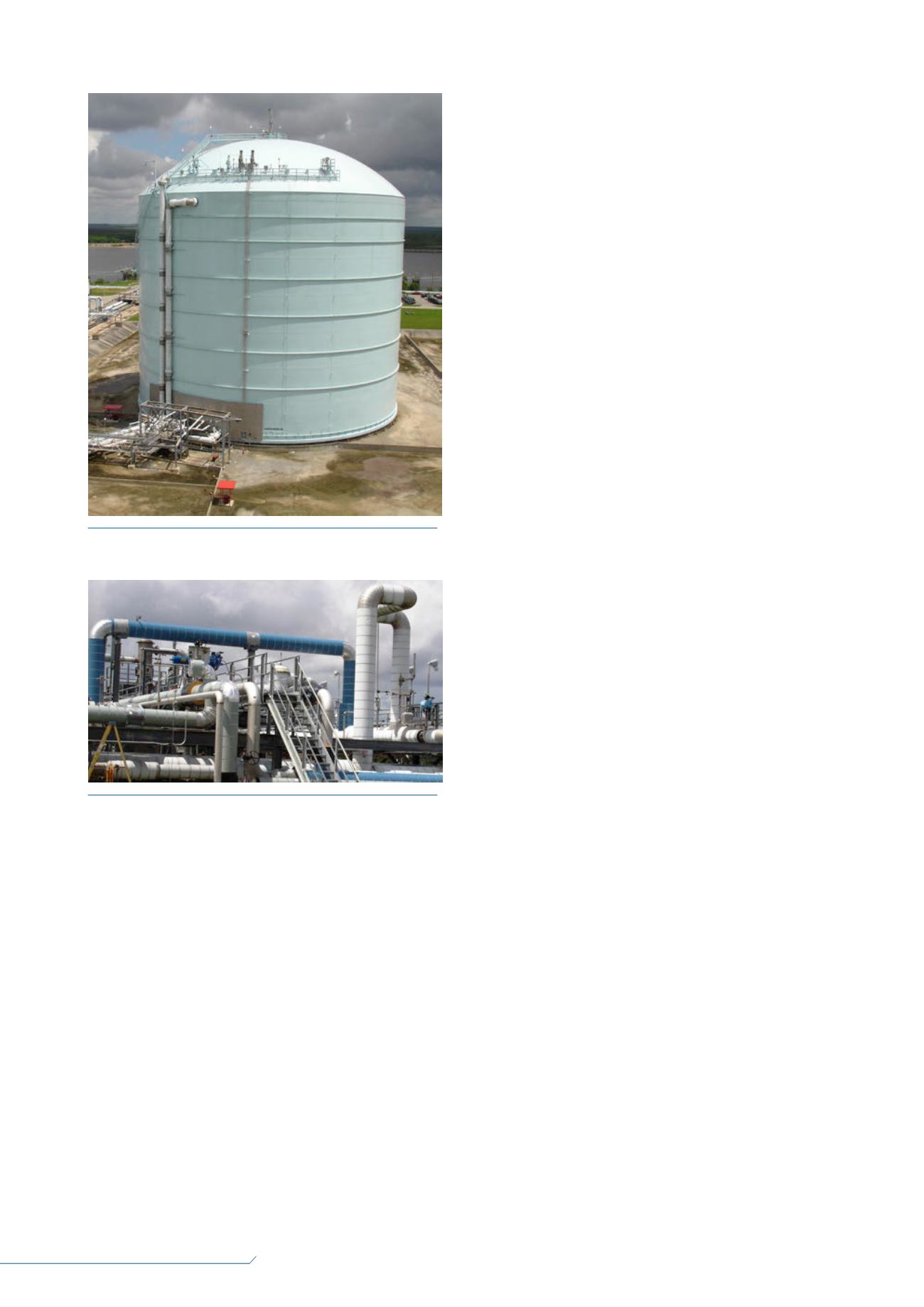
60
LNG
INDUSTRY
JULY
2016
The organisation now known as ISOwas initiated in 1926 as
the International Federation of the National Standardising
Associations. Deutsches Institut für Normung (DIN) standards
began to advance in Germany in 1936 and, of course, there were
similar advancements of other standards, such as ASME, ANSI,
EN, NACE, NORSOK, SSPC, API, etc.
CINI, the International Standard for Industrial Insulation,
emerged in 1988 and is evolving into a dominant global standard
for thermal insulation in LNG applications. International
companies, such as Shell, DSM, DOW, AkzoNobel and the
former Hoogovens, jointly set up CINI, concluding that there was
a considerable need for improved insulation system quality
standards. LNG engineering firms, such as CB&I, KBR, Chiyoda,
etc., increasingly incorporate CINI standards into their insulation
specifications – at least somewhat driven by CINI’s focus on
having the physical properties of insulants increasingly
measured at in-situ conditions. For example, thermal
conductivities, strengths, tensile E-modulus, etc., must be
measured at temperatures down to -165°C (-265°F).
Preface
Experience has demonstrated that insulation systems within
LNG facilities are often ‘under-designed’ when compared to
other mechanical systems. Decades of lessons learned from
under-designing other mechanical systems, such as piping
materials, welding, compressors, relief valves, etc., have led
to a keen awareness among LNG engineers regarding impacts
on safety, plant reliability, process efficiency, energy loss, and
environmental compliance.
Unfortunately, the repercussions of under-designed
insulation systems were often less obvious, yet had similar
manifestations, as well as loss of product due to boil-off,
increased maintenance costs from valve freeze-ups, and
sometimes curtailments in production or even personal injury.
Related costs and foregone profits could have been avoided
with improved compliance with existing standards and
implementation of a broader risk mitigation programme.
The purpose of this article is to offer a macro-level discussion
of the following:
The role of standards in mitigating insulation risks.
Which standards are becoming dominant for LNG insulation.
Where standards must be supplemented with broader risk
mitigation.
The encouraging trends within CINI and ASTM add more
value to LNG engineers tasked with selecting cryogenic insulants
and designing cryogenic insulation systems. Compared to using
standards and test methods that generally provide information
only at ambient temperatures, CINI’s 2014 revision and ASTM
C591-15, to a lesser extent, require testing of physical properties
at lower temperatures, down to the LNG process range.
The increased due diligence executed by specifiers/engineers
by insisting that suppliers comply with the latest standards and
test methods is also encouraging. Furthermore, engineers are
increasingly diligent as they strive to compare physical properties
across competitive insulants that are unfortunately measured by
disparate test protocols.
CINI vs ASTM
The 2015 versions of several ASTM governing insulation
standards, such as C591 for PIR insulation and C552 for cellular
glass, implemented requirements for thermal conductivity (
ƛ
)
measurements from down to at least -129°C (-200°F). Note
that leading insulant manufacturers typically also measure
ƛ
at
LNG temperatures. ASTM does not yet require other physical
properties to be measured at cryogenic temperatures.
While ASTM should be applauded for taking this significant
step, CINI-2014 took the additional step to require that LNG
insulation suppliers demonstrate compliance with an array of
additional physical properties measured at -165°C (-265°F).
Thus, today’s LNG engineers seeking to take advantage of
the latest in supportive standards to mitigate risk should
consider CINI.
CINI
As noted, CINI standards presently go beyond ASTM to
require that additional physical properties of insulants must
be measured at LNG temperatures and comply with minimum
CINI standards in order to be deemed acceptable in an LNG
application. Additionally, CINI establishes which ASTM test
Figure 1.
Elba Island LNG tank.
Figure 2.
Elba Island LNG facility (blue pipe is LNG; white pipe
is gas).


